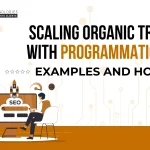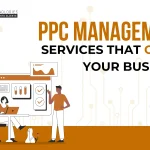Having a strong online presence is crucial for companies of any size in today’s competitive digital market. Google Ads, a comprehensive Internet advertising network, comes into play here. In this comprehensive blog, we’ll dig into the complexities of Google AdWords and examine its different tools, features, and methods to help you get the most out of your online marketing efforts.
What are Google Ads?
Google Ads, that is also known as Google AdWords, is Google’s pay-per-click (PPC) advertising platform. It allows companies to generate and show advertisements on Google’s search engine results pages (SERPs), partner websites, and other Google platforms.
Creating Your Google Ads Account
To start on your Google Ads journey, start by creating an account on the platform. Simply visit the Google Ads website, sign in with your Google account, and follow the guided steps to set up your profile.
Navigating the Google Ads Manager
Once your account is set up, you’ll find yourself in the Google Ads Manager. This centralized hub allows you to create, manage, and monitor your ad campaigns. From defining keywords to setting budgets, the Google Ads Manager is your command center.
Understanding Google Ads Auction Insights
Understanding the auction process involves a bidding structure. When a user types a search query, an auction is launched, which determines which advertise are displayed. The Auction Insights function gives useful information about your competitors, such as impression share, average position, and overlap rate.

Competitive Landscape Analysis:
Auction Insights in Google Ads provides valuable insights into how your ad campaigns are performing compared to your competitors. It gives you a snapshot of who else is bidding on the same keywords as you are.
Impression Share Metrics:
Auction Insights offers metrics like Impression Share, which indicates the percentage of times your ads were shown out of the total available opportunities. This helps you understand your ad’s visibility in the market.
Average Position Data:
You’ll also get data on the average position of your ads compared to your competitors. A higher average position generally means your ad appears closer to the top of the search results.
Overlap Rate:
This metric shows how often another advertiser’s ad received an impression when your ad also received one. A high overlap rate might indicate strong competition for specific keywords.
Position Above Rate:
It shows how often another advertiser’s ad appeared above yours in the search results when both ads were shown. This can give insights into areas where your competitors are outperforming you.
Top of Page Rate:
This metric indicates how often your ad appeared at the top of the search results. Being at the top usually gets more visibility and clicks.

Absolute Top of Page Rate:
This shows how often your ad appears at the absolute top position, which is the first ad above the organic search results.
Outranking Share:
Outranking share is the percentage of times your ad ranked higher in the auction compared to a competitor’s ad. It’s a good indicator of your ability to outperform your competitors.
Comparison Across Devices:
Auction Insights data can also be segmented by device type, allowing you to understand how your performance varies on desktop, mobile, and tablet.
Strategic Insights:
By analyzing Auction Insights, you can identify areas where you might need to adjust your bidding strategy, improve ad quality, or increase budgets to stay competitive.
Identifying Opportunities:
You can use Auction Insights to find gaps where your competitors might not be bidding strongly. This could be an opportunity to increase your presence in those areas.
Monitoring Changes:
Regularly reviewing Auction Insights can help you monitor shifts in the competitive landscape, enabling you to adapt your strategies accordingly.
What is Google AdSense?
Google AdSense is a flexible online monetization technology that enables website owners and content providers to make cash from their digital platforms. Publishers may display contextually relevant adverts to their visitors by seamlessly integrating AdSense ad units into their websites. These advertisements are personalized to the audience’s content and interests, improving the user experience while giving a chance for publishers to earn money. Google AdSense is a pay-per-click or pay-per-impression strategy that allows publishers to receive a portion of the money generated when users engage with the displayed adverts. This initiative helps not just publishers by providing a straightforward way to monetize their online presence, but it also links advertisers with relevant consumers, forming a symbiotic connection that supports the digital economy.
Making Most of Your Google Ads Campaigns

Keyword Research and Selection for Google Ads
Effective keyword research is the backbone of a successful Google AdWords campaign. Use tools like Google Keyword Planner to identify relevant keywords that potential customers are searching for.
Writing Compelling Ad Copy
Your ad copy is your chance to make a lasting impression. Incorporate the keywords naturally into your ad copy, highlighting the unique value your product or service offers.
Creating High-Quality Landing Pages
A strong landing page is essential to convert ad clicks into meaningful actions. Ensure that your landing page aligns with the ad’s message and provides a seamless user experience.
Optimizing Ad Extensions for Better Performance
Ad extensions offer additional information and enhance your ad’s visibility. Use site links, callouts, and structured snippet extensions to provide more context to your potential customers.
Efficient Google Ads Management Strategies
Managing Google AdWords campaigns effectively requires a strategic approach that optimizes resources, maximizes ROI, and adapts to changing trends. Here are key strategies to ensure your campaigns achieve their full potential:
Data-Driven Keyword Optimization
Effective Google Ads management begins with thorough keyword optimization. Regularly review and refine your keyword list based on performance data. Identify high-performing keywords that drive conversions and clicks, and consider removing underperforming or irrelevant keywords that drain your budget.
Ad Copy Refinement
Crafting compelling ad copy is essential to attract clicks and engagement. Continuously test different ad variations with varying headlines, descriptions, and call-to-action phrases. Analyze which ad copies yield the best click-through rates and conversions, and adjust your approach accordingly.
Smart Budget Allocation
Strategically allocate your budget based on the performance of different Google search ad campaigns, ad groups, and keywords. Prioritize high-converting campaigns while scaling down or pausing campaigns that show poor results. Experiment with different bidding strategies to find the optimal balance between cost and performance.
A/B Testing Landing Pages
The landing page experience plays a crucial role in conversion rates. Conduct A/B tests with different landing pages to determine which layouts, content, and design elements resonate best with your audience. Optimize landing pages for fast loading times, mobile responsiveness, and clear calls to action.
Audience Segmentation and Targeting
Segment your audience based on demographics, behaviors, interests, and previous interactions. Utilize audience targeting features to tailor your ads to specific user segments. Craft personalized ad copies that speak directly to each audience’s needs, increasing the likelihood of engagement.
Ad Extensions for Enhanced Visibility
Take advantage of ad extensions to provide additional information and improve ad visibility. Use site links, callouts, and structured snippet extensions to highlight key features, benefits, and offers. Ad extensions can increase ad real estate and provide more value to potential customers.
Regular Performance Analysis and Adjustments
Consistently analyze campaign performance using data from Google Ads’ reporting tools. Monitor key metrics such as click-through rates, conversion rates, cost per conversion, and return on ad spend (ROAS). Based on this data, make informed adjustments to bids, targeting, and ad content.
Geo-Targeting for Local Relevance
For businesses targeting specific regions, geo-targeting is essential. Customize your ads to display only to users within your desired geographic area. Utilize location-specific ad copy and promotions to resonate with local customers, enhancing the relevance of your ads.
Continuous Ad Testing
Ad testing is an ongoing process to refine and optimize your campaigns. Experiment with different ad formats, images, and offers to identify what resonates best with your audience. Implement systematic testing to ensure your campaigns are always evolving to capture changing customer preferences.
Utilizing Automation Wisely
Leverage Google’s automation tools, such as Smart Bidding and Responsive Search Ads, to streamline campaign management. However, exercise caution and closely monitor automated strategies to ensure they align with your campaign goals and deliver the desired results.
Google Ads Tools and Resources
Google Ads Editor
The Google Ads Editor is a powerful desktop application that allows you to make bulk changes to your campaigns, saving you time and effort.
Using Google Ads Coupons for Savings
Google often provides coupons to new advertisers, offering an initial budget boost. Use these coupons to kickstart your campaigns while keeping an eye on your spending.
Monetizing Your Website with Google AdSense
If you’re a website owner looking to monetize your online content, Google AdSense allows you to display relevant ads on your site, earning revenue based on clicks and impressions.
What Are the Advantages of Google Ads?
For businesses operating locally, Google Local Service Ads are a game-changer. These ads appear at the top of SERPs, showcasing your business to users in your area.

Targeted Reach and Precision
It allows you to precisely target your ads to reach your desired audience. You can target by location, demographics, interests, and even specific keywords. This means your ads are shown to users who are most likely to be interested in your products or services, increasing the chances of conversions.
Immediate Visibility
With Google Ads, your ads can be up and running within a short period. Unlike organic search efforts, which take time to gain visibility, it provides immediate exposure for your business on relevant search results pages and websites.
Flexible Budgeting Options
Whether you’re a small business with a limited budget or a larger enterprise, it offers flexibility in budgeting. You can set a daily or monthly budget that suits your needs, and you only pay when someone clicks on your ad (Pay-Per-Click or PPC), ensuring you’re getting value for your money.
Measurable Results and Analytics
It provides comprehensive analytics that allows you to track the performance of your campaigns in real time. You can measure metrics such as clicks, impressions, click-through rates, and conversions. This data helps you understand what’s working and what needs improvement, enabling you to optimize your campaigns for better results.
Ad Customization and Testing
It offers various ad formats, including text ads, display ads, video ads, and more. This customization allows you to experiment with different ad creatives and formats to see what resonates best with your audience. A/B testing different ad variations helps you refine your campaigns over time.

Geographic Targeting
For businesses with a local or global presence, It allows you to target specific geographic locations. Whether you want to reach customers in your neighborhood or across the world, you can tailor your ads accordingly.
Remarketing Opportunities
Remarketing is a powerful feature that lets you target users who have previously interacted with your website or ads. This enables you to re-engage potential customers who might have shown interest but didn’t convert initially.
Mobile-Friendly Advertising
Given the increasing use of mobile devices, it ensures that your ads are optimized for mobile users. Mobile ads can help drive foot traffic to local businesses and offer a seamless user experience on smartphones and tablets.
Control and Flexibility
It gives you control over various aspects of your campaigns. You can adjust bids, pause or resume campaigns, schedule ads to run at specific times, and more. This flexibility allows you to adapt your strategies based on real-time data and market trends.
Competitive Advantage
Using Google Ads, even small businesses can compete with larger competitors on a level playing field. With effective keyword targeting and compelling ad copy, you can capture the attention of your target audience and stand out in search results.
Gaining Insights through Google Ads Auction Insights
Auction insights within Google Ads provide valuable information about how your ads stack up against the competition. This feature reveals who else is bidding on the same keywords and how your performance compares. Analyzing auction insights allows advertisers to fine-tune their bidding strategies and gain a competitive edge.
Wrap Up!
Mastering Google Ads requires a blend of strategic thinking, data analysis, and continuous optimization. By leveraging the power of Google Ads Manager, exploring coupons, embracing local service ads, and collaborating with agencies, businesses can tap into the immense potential of online advertising. From monetizing websites to understanding auction insights, this guide equips advertisers with the knowledge to make informed decisions and achieve their marketing goals in the ever-evolving digital landscape, including the optimization of Google Responsive Search Ads.
 seolounge
seolounge



